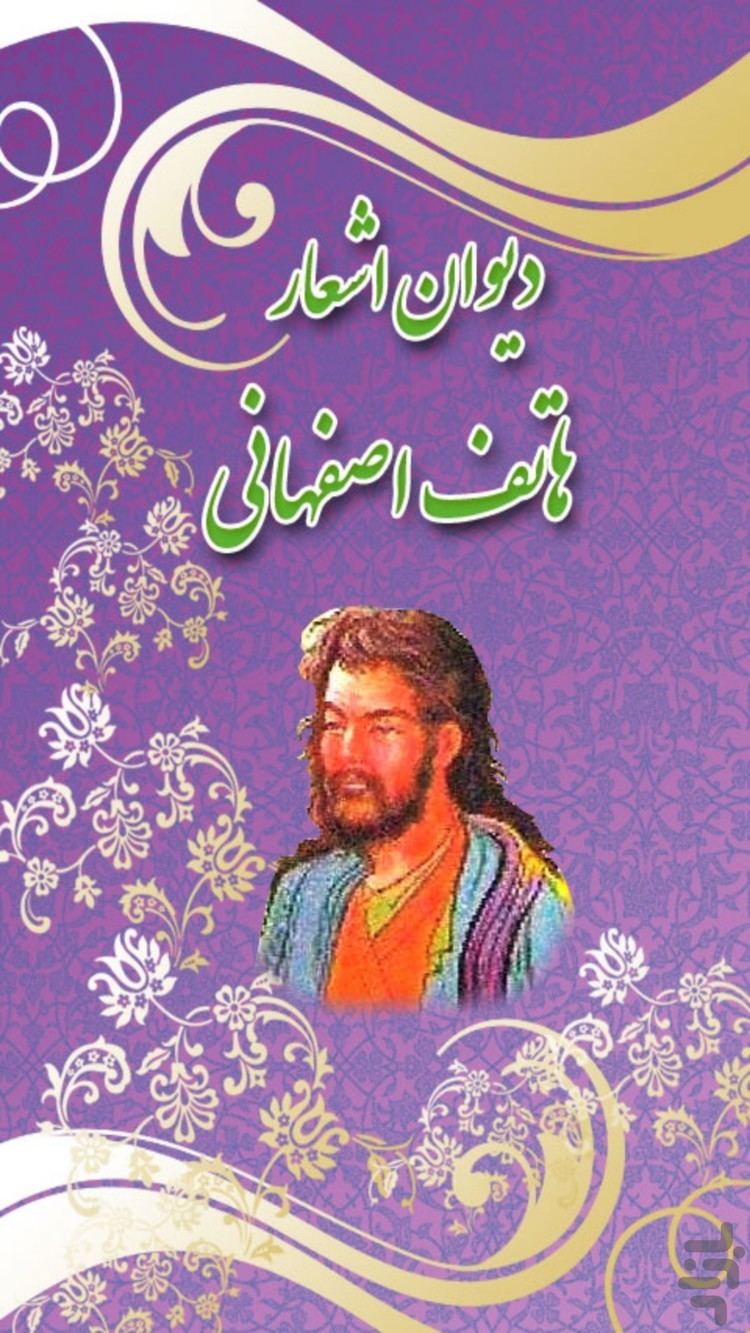Name Hatef Esfehani | Role Poet | |
 | ||
Seyyed Ahmad Hatef Esfahani (Persian: سید احمد هاتف اصفهانی) (also spelled as Hatif Isfahani) is a famous Iranian poet of the 18th century.
Contents
Life
Hatef Esfahani was born in Isfahan (Esfahan), a central province of Iran, and most likely he died there in 1783. (Some documents also indicate that he died in 1777). Hatef's date of birth is unknown. He was contemporary to at least seven rulers of Iran, namely Shah Rukh of Persia (ruled 1748–1796), Karim Khan Zand (r. 1760–1779), Abolfath Khan, Mohammad Ali Khan, Sadiq Khan Zand, and Ali Murad Khan (all from Zand dynasty who ruled 1779–1785), and Agha Mohammad Khan, the founder of Qajar dynasty (r. 1781–1797). He studied mathematics, medicine, philosophy, literature, and foreign languages (Turkish and Arabic). He had a son and a daughter. His daughter, named Beygom, married poet Mirza Ali Akbar Naziri.
Poems
Hatef was an expert in the composition of ghazals (odes). A ghazal is a poem of complex structure and exalted by lyrical or rhapsodic mood on some stated theme. Another line of his profession was in the writing of tarji'-band poems. When the linking verse is recurrent, the poem is called a tarji'-band (literally: return-tie). But when the linking verse is varied, the poem is called a tarkib-band (literally: Composite-Tie). He was also skilful in the composition of qasidas, elegies (sugnameh), rubaiyat (quatrains) and fragments (qita'at). But his reputation lay in his excellent poems of a mystical nature.
Hatef has been considered as one of the great Iranian mystic poets who taught many peoples about the higher aspects of the human existence and the journey of the soul. Hatef's poems are smooth, clear and flowing and free of ambiguities. He followed Saadi and Hafez especially in the composition of his odes. Due to his excellent odes, Hatef is also very well known in many parts of Europe and particularly in Italy.
He wrote a tarji'-band which has made him famous. It is perhaps one of the best single poems in Persian Mystic poetry. Hatef went to a fire temple, to a church, and to a pub, and everywhere he found that people worshipped the same One God. In this poem, the part that deals with Christianity is an attempt to explain the mystery of the Trinity. The description of a discourse with a beautiful girl in a church perhaps reveals the Armenian influence in Iran from the time of Shah Abbas of Safavid dynasty onwards. (Shah Abbas ruled Iran from 1588 to 1629). Click [1] to view the Persian and the English versions of that part of the poem.
Hatef also wrote three odes in Arabic. In two of his odes, he was inspired by the poems attributed to Urvah ibn Hazam Ozri, Jamil ibn Ozri and Umar ibn Abirabia. In the third ode, which is a eulogy of the Prophet, he was inspired by the poems composed by Fallera and Bursiri. Hatef's Poetry Anthology (in Persian: Divan-e-Hatef-e-Esfahani) was firstly edited and published in Tehran in 1953 by late poet and scholar Hassan Vahid Dastgerdi (Dastjerdi), the founder of the literary journal Gift (in Persian: Armaghan).
